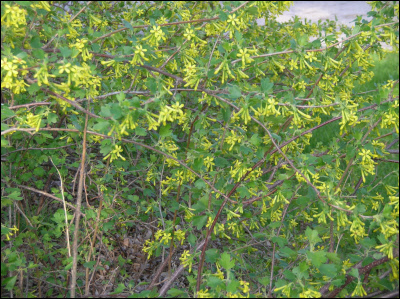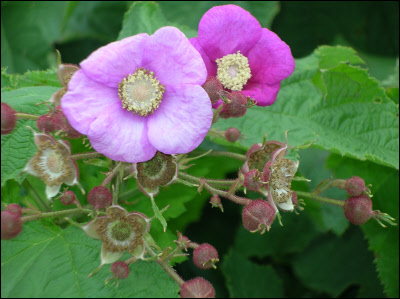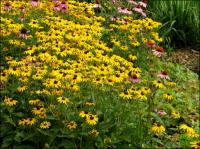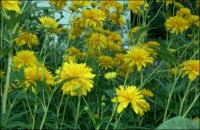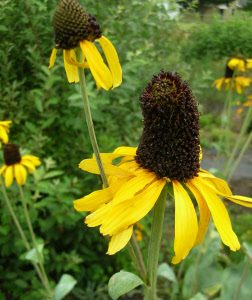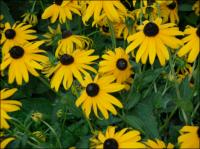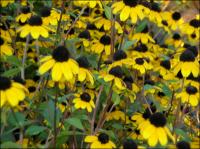Black Walnut Tolerant
Showing 81–88 of 110 results
-
Ribes aureum syn. Ribes odoratum Clove currant Z 3-8
yellow flowers smother the shrub
Early to mid-spring yellow flowers smother the shrub, giving off the most sweet, clove-scented fragrance – heavenly.
Size: 6' x 6'
Care: Sun in moist well-drained to well-drained soil. Immune to Walnut toxins.
Native: west-central US
Wildlife Value: attracts hummingbirds and butterflies.Found by Meriwether Lewis in 2 locations -“near the narrows of the Columbia.” April 16, 1806, now Klickitat County, Washington, and on July 29, 1805 in Montana. Many different tribes ate the berries – Blackfoot, Cheyenne, Klamath, Montana, Paiute & Ute. Others, Shoshone and Paiute, used the shrub’s inner bark to heal sores and swellings. English plantsman Wm. Robinson declared that it “deserves to be more commonly grown.” (1933)
**LISTED AS OUT OF STOCK BECAUSE WE DO NOT SHIP THIS ITEM. IT IS AVAILABLE FOR PURCHASE AT OUR RETAIL LOCATION.
-
Rubus odoratus Flowering raspberry Z 2-8
Purple-pink saucer shaped flowers all summer
Purple-pink saucer shaped flowers from June to October. Rarely seen shrub.
Size: 7-8' x 8' spreading
Care: Sun to shade in moist well-drained soil. Slightly acidic.
Native: Maine to Michigan, south to Illinois, Tennessee, east to North Carolina and all places in between
Wildlife Value: Immune to walnut toxins.For sale in an English catalog in 1730. William Robinson, father of the mixed perennial garden, praised the flowering raspberry as bearing “large clusters of rich purple flowers. Bearing scented leaves, the leaves and not the flowers being fragrant.”
-
Rudbeckia fulgida Black eyed susan Z 4-9
The classic Black-eyed susan, 3" wide yellow daisies with a dark center from July-October
The classic Black-eyed susan, 3″ wide yellow daisies with a dark center from July – October
Size: 30" x 18"
Care: full sun to part shade in moist well-drained to well-drained soil
Native: Southeastern U.S.
Wildlife Value: A great number of bees, flies and beetles collect pollen or drink nectar from this RudbeckiaThis species fulgida was introduced to England in 1760 and named in William Aition’s Hortus Kewensis, V. 3 p. 251 (1789). Cherokee ate the stems and leaves and also used this species to remedy earaches, sores, flux, venereal disease, snakebites, dropsy, and swelling. Iroquois healed the heart and rid children of worms with this, Potawatomi make a brown dye with this.
-
Rudbeckia laciniata var. hortensia Golden Glow Z 3-9
"Rich, yellow double flowers borne in autumn, excellent for cutting," Sanders 1913. July-August blooms on these imposing double daisies.
“Rich, yellow double flowers borne in autumn, excellent for cutting,” Sanders 1913. July-August blooms on these imposing double daisies.
LIMITED QUANTITES AVAILABLE, LIMIT OF 1 PER CUSTOMER PLEASE
Size: 5-7' x 12" and spreading
Care: full sun, moist well-drained to well-drained soil, drought tolerant & immune to Walnut toxins.Serendipitous discovery in a group of seedlings in 1894. Said to be “the most popular hardy perennial introduced during the last 25 years,” April, 1905, The Garden magazine. Recommended by Gertrude Jekyll in 1908. Beth in New Mexico advised that her alpaca named Ricardo finds them delicious.
-
Rudbeckia maxima Great coneflower Z 4-9
Magnificent wildflower with huge paddle-shaped leaves of blue-grey-green and tall stalks of finch-gold petals
Magnificent wildflower with huge paddle-shaped leaves of blue-grey-green and tall stalks of finch-gold petals encircling central cones 4-5″ tall.
Size: 5-6' x 2'
Care: Sun in moist to moist well-drained soil
Native: OK, AK, TX & LA
Wildlife Value: Nectar source for larvae of painted Lady butterfly & for large Wood nymph butterfly.Rudbeckia was named by Linnaeus for his University of Upsala professor, Olaf Rudbeck. Rudbeck made the surprising claim “that the Paradise of Scripture was situated somewhere in Sweden.” C.F. Leyel. This species collected by Englishman Thomas Nuttall (1786-1859) in Oklahoma Territory near the Red River in 1816. Nuttall searched much of the No. American continent from New England west to Oregon, the South, Midwest, the Plains, S.E., California & Hawaii, finding thousands of new plants.
-
Rudbeckia subtomentosa Sweet coneflower Z 4-8
Fragrant yellow daisies with purplish cones, July- October
Fragrant yellow daisies with purplish cones, July- October
Size: 4-5' x 1-2'
Care: Sun to part shade in moist to moist well-drained soil
Native: East US, Wisconsin native.
Wildlife Value: attracts butterfleisRudbeckia was named by Linnaeus for his University of Upsala professor, Olaf Rudbeck. Rudbeck made the surprising claim “that the Paradise of Scripture was situated somewhere in Sweden.” C.F. Level. This species described in 1815. May have been collected by English planthunter John Bradbury (1768-1823).
-
Rudbeckia triloba Branched coneflower, Brown eyed susan Z 3-9
Multitudes of small sunny daisies with brown centers from July to October, as cheery as they come.
Multitudes of small sunny daisies with brown centers from July to October, as cheery as they come.
Size: 3-4' x 2-3'
Care: sun to part shade in moist well-drained soil.
Native: most of North America, Wisconsin native
Wildlife Value: Numerous bees, some flies, a few wasps and butterflies feed on the nectar and pollen. One bee feeds only on Rudbeckias and Ratibida flowers.
Awards: Georgia Gold Medal winner. England’s Royal Horticultural Society Award of Garden Merit.Rudbeckia was named by Linnaeus for his University of Upsala professor and founder of the Uppsala botanic Garden, and his son, University of Uppsala professor named Olaf Rudbeck. This species collected in Colonial Virginia in 1600’s.
-
Sambucus canadensis syn. Sambucus nigra var. canadensis. Elderberry, American elderberry Z 3-9
In late spring to mid-summer lavish, fragrant flat-to dome-shaped clusters of flowers bloom above this arching, multi-stemmed shrub. Late summer into fall the multitude of flowers turn into purple-black, edible fruits, up to 2000 per cluster!
In late spring to mid-summer lavish, fragrant flat-to dome-shaped clusters of flowers bloom above this arching, multi-stemmed shrub. Late summer into fall the multitude of flowers turn into purple-black, edible fruits, up to 2000 per cluster!
Size: 5-12’ x spreading quickly by suckers. Best to grow as hedge, along a roadside, fence-line or forest edge.
Care: sun to part shade in moist to well-drained soil
Native: Americas east of Rocky Mountains south to Bolivia. Wisconsin native
Wildlife Value: branches and leaves make nesting sites and give cover for birds.. Many birds (including, Pheasant, Bluebird, Cedar waxwing, Cardinal, Mockingbird and others) as well as some mammals eat the sweet, but slightly bitter, fruit. It is a source of pollen for numerous bees and other insects.Collected before 1735. Native Americans made extensive use of this, Cherokee used it topically for boils, burns and infections and internally for rheumatism, fevers, dropsy, as a diuretic, and of course ate the berries. Costanoan made its hollow twigs into pipes, flutes and shafts for arrows. Several Natives infused the flowers and foliage with hot water to make steam baths. And many natives ate it, boiled it, jammed it, and added the fruit to cakes. Today people eat them in jellies, jams, pancakes, pies and wine and make homeopathic medicine from it. Reportedly ripe berries are high in vitamin C and fiber. It’s also an antioxidant.
**LISTED AS OUT OF STOCK BECAUSE WE DO NOT SHIP THIS ITEM. IT IS AVAILABLE FOR PURCHASE AT OUR RETAIL LOCATION.

